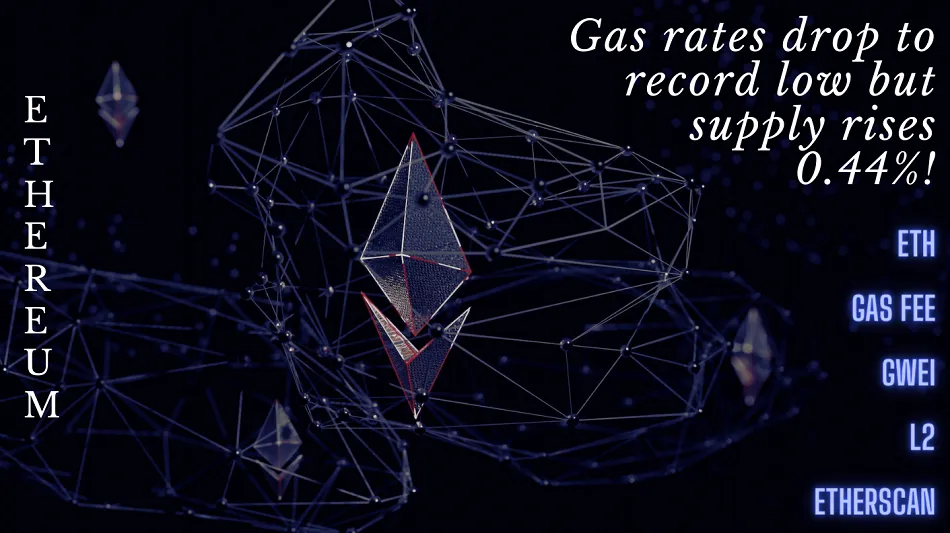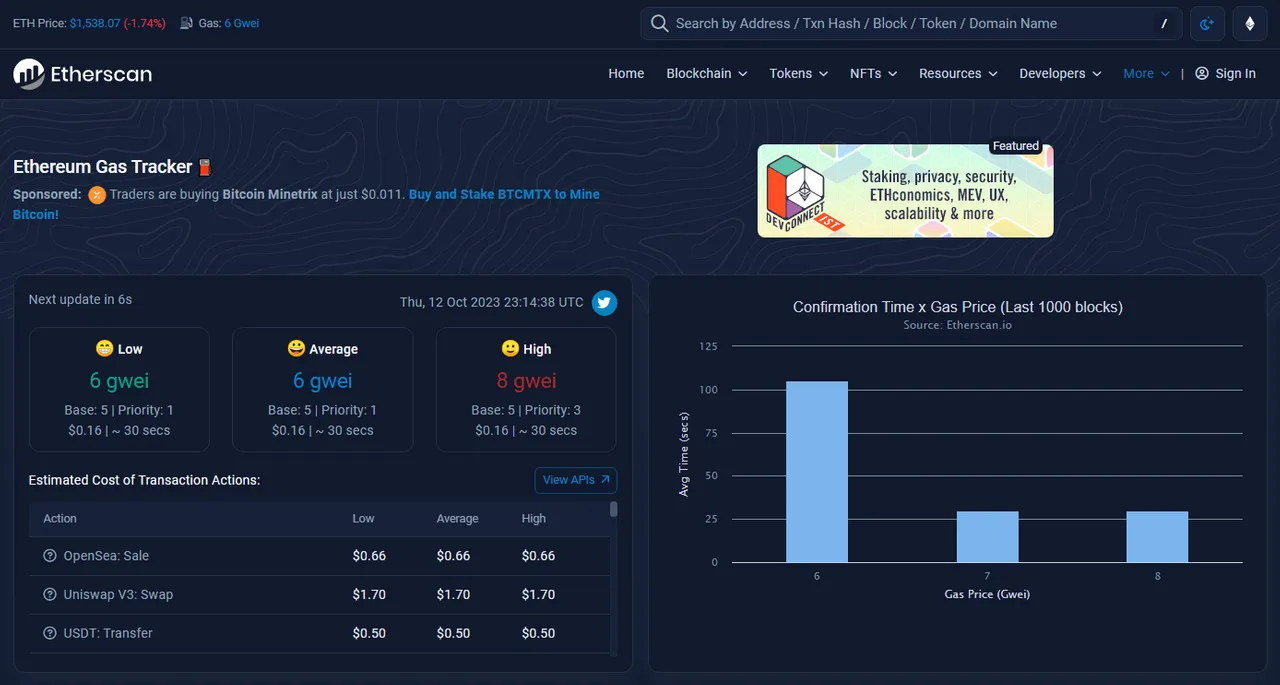One of the reasons I abstained from using the Ethereum network was the high gas costs that had to be paid when making a transaction. Not only that, if I needed to do other operations, such as a swap or sign a contract prior to that exchange; the costs were quite high.
Uno de los motivos por los que me abstuve de utilizar la red de Ethereum fueron los altos costos de gas por los que había que pagar al realizar una transacción. No solo eso, también si necesitaba hacer otras operaciones, como por ejemplo un swap o firmar un contrato previo a ese intercambio; los costos eran bastante elevados.

Shubham Dhage | Unsplash
I had no choice but to use other types of networks, such as Polygon's, which didn't give me those headaches. As a result of my inexperience at the time, I still have a good amount of tokens that at that time were worth a fortune (approximately $850) and that have remained there because I don't have the gas to withdraw them and send them to an exchange or make a swap. That has been more than a misfortune, a learning experience.
No me quedó mayor opción que utilizar otro tipo de redes, como por ejemplo la de Polygon que no me traía esos dolores de cabeza. Como consecuencia a mi inexperiencia en su momento, aún poseo una buena cantidad de tokens que en aquellos tiempos valían fortuna (aproximadamente unos $850) y que se me han quedado allí por no disponer del gas para retirarlos y enviarlos hacia algún exchange o hacer un swap. Esa ha sido más que una desgracia, un aprendizaje.
It is clear that the high prices in gas come mainly from the congestion of the main network, in fact that is why many of us prefer to use the second layer of this blockchain since the costs are much lower, and to tell the truth, there is a very wide ecosystem in these other chains. One can find access to Play-To-Earn games as well as platforms that host the trade of NFTs, not to mention that there is also DeFi and tons of dApps.
Y está claro que los altos precios en gas vienen principalmente por la congestión de la red principal, de hecho es por eso que muchos preferimos utilizar la segunda capa de esta blockchain ya que los costos son muchísimo más reducidos, y a decir verdad, hay un ecosistema muy amplio en estas otras cadenas. Uno puede encontrar el acceso a juegos Play-To-Earn como también a plataformas que albergan el comercio de NFTs, sin mencionar que también existe el DeFi y montones de dApps.
A few days ago, the average Ethereum rate fell to 8.8 Gwei (annual), which means that, seen in one way, the use of the network has decreased considerably, and is only comparable to what happened on October 2, 2022, when the average on that date was 8.4 Gwei. Currently, the Ethereum supply is growing at an annual inflation rate of 0.44%.
Hace algunos pocos días, la tarifa promedio de Ethereum descendió a 8.8 Gwei (anual), lo cuál significa que, visto de una manera, la utilización de la red se ha decrementado considerablemente, y sólo es comparable con lo sucedido el 2 de Octubre de 2022, cuando el promedio en esa fecha fue de 8.4 Gwei. Actualmente el suministro de Ethereum está creciendo en un 0.44% de inflación anual.
If we talk about the volume when trading with NFTs, this activity had a significant decrease from the beginning of the year as well as the operations in the DEXs such as UniSwap or 1inch, and perhaps we could include MetaMask due to its new updates.
Si hablamos del volumen al momento de comerciar con NFTs, esta actividad tuvo un descenso significativo desde principios del año al igual que las operaciones en los DEX como por ejemplo UniSwap o 1inch, y tal vez podríamos incluir a MetaMask debido a sus nuevas actualizaciones.
As for gas costs, I personally like to check the so-called "gas tracker", which offers information instantly about these costs. We must take into account that at one time of the day these costs drop and that is why many take advantage to make the transactions, for example at night.
En lo que respecta a los costes de gas, a mí particularmente me gusta revisar el llamado "gas tracker", que ofrece información al instante sobre estos costes. Debemos tener en cuenta que en un momento del día es que estos costes bajan y es razón por la cuál muchos aprovechan a realizar las transacciones, por ejemplo en horarios nocturnos.

Ethereum Gas Tracker
More so, when I was playing Axie Infinity, for SLP withdrawals we had to wait for a time when network congestion was much more relieved and therefore the price in Gwei decreased, favorably impacting the transaction fee. One of the reasons that made me learn more about one of the most interesting blockchains after Bitcoin.
Con más razón, cuando jugaba a Axie Infinity, para los retiros de SLP debíamos esperar a un horario en el que la congestión de la red se veía mucho más liberada y por lo tanto el precio en Gwei disminuía repercutiendo favorablemente en el fee de la transacción. Uno de los motivos por los que me hacía aprender más sobre una de las blockchain más interesantes que existen luego de Bitcoin.
The Etherscan website also allows you to visualize, through a series of data, the applications or protocols that consumed the most fees in the last 3 and 24 hours, and their respective percentage. I don't know if I'm wrong but looking at it this way, I guess it's about the ETH that's in circulation, which were used to pay the costs in transactions made in one day.
El sitio de Etherscan también permite visualizar a través de una serie de datos las aplicaciones o protocolos que más fee consumieron en las últimas 3 y 24 horas, y su respectivo porcentaje. No sé si me equivoco pero viéndolo así, supongo que se trata de los ETH que hay en circulación, cuáles fueron utilizados para pagar los costos en las transacciones hechas un un día.

Information from Etherscan
With the decrease in gas rates, the inflationary process was affected, and with it the burning of the cryptocurrency fell to a minimum of 7,084 ETH burned. If we talk about supply, 1,450 ETH are being generated per day, or what is equivalent to $2.2 million dollars.
Con la disminución de las tarifas de gas, el proceso inflacionario se vio afectado, y con ello la quema de la criptomoneda bajó a un mínimo de 7,084 ETH quemados. Si hablamos del suministro, se están generando 1,450 ETH por día, o lo que es equivalente a $2.2 millones de dólares.
Ethereum's second layer shows, through data from different companies, a reduction in gas expenses. Arbitrum, Optimism and Base (the latter) had a 30% lower expenditure than the previous week. Maybe this means something bad for some but good for others, because having the opportunity to experiment in new networks and in Ethereum's main network, I consider it a fundamental step to gain experience in the cryptospace. Greetings.
La segunda capa de Ethereum muestra a través de datos de distintas empresas una reducción en los gastos de gas. Arbitrum, Optimism y Base (la más reciente de todas) tuvieron un gasto del 30% menos respecto a la semana anterior. Tal vez esto signifique algo malo para algunos pero bueno para otros, pues tener la oportunidad de experimentar en nuevas redes y en la principal de Ethereum, considero que es un paso fundamental para ganar experiencia en el criptoespacio. Un gran saludo.

- I have used information from decrypt.co/es.
- Translated from spanish with Hive Translator by @noakmilo.